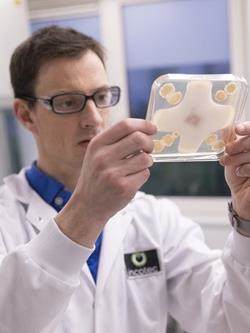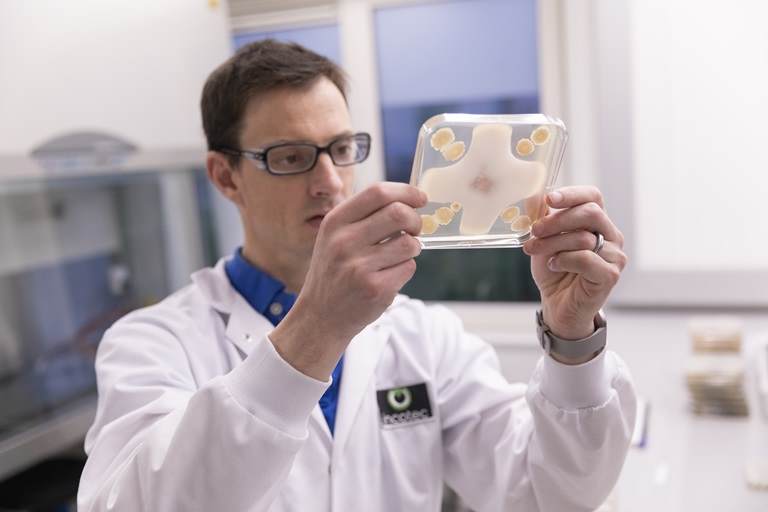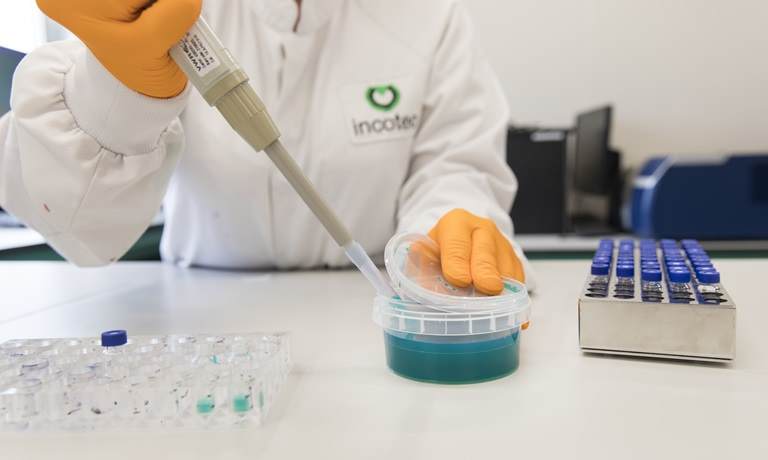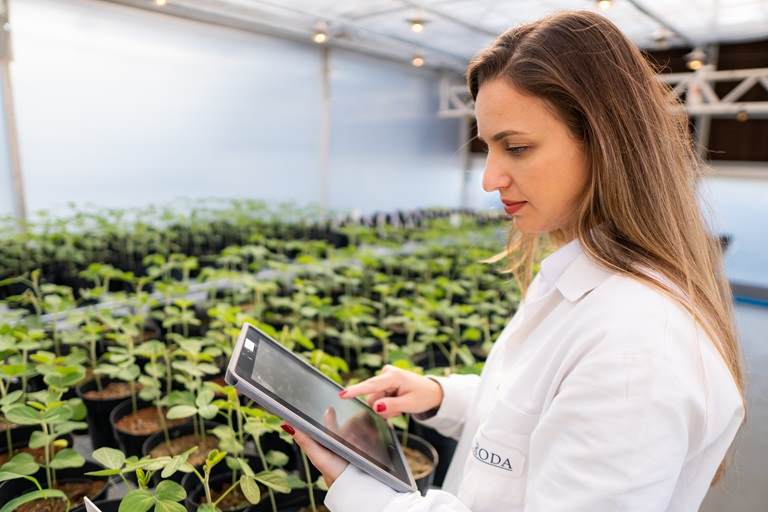
Biological control
There is a clear shift in agricultural towards more sustainable products, methods, and processes. With the European Commission aiming for a 50% reduction of chemical pesticides and hazardous pesticides by 2030, biological control is being widely explored as an alternative. The use of biologicals in agriculture has wide applicability but what do we mean by biologicals?
The term biological can be broad, but we focus on microorganisms (eg fungi, bacteria) or large molecules (eg peptides, proteins, RNA) that can be formulated into products and applied to crops to deliver beneficial results. These can include:
- Biofertilisers – formulation of micro-organisms or molecules that are applied to seeds, plants, or soil, to promote growth by making nutrients more available for the plants.
- Biostimulants – microorganisms or molecules that improve plant responses to stress and/or enhance yield quality and/or quality.
- Biopesticides and biocontrol agents – (micro)organisms or large molecules that kill or debilitate pests.
These types of biological ingredients need to be formulated, which is our area of interest. Beneficial insects can also be described as biologicals but no formulation is required here.
Whilst biological products provide a sustainable alterative to chemical pesticides, how do we overcome the formulation challenges they present?
White paper: Formulating Biologicals for Agriculture


New whitepaper released - Formulating biologicals for agriculture
In this paper we discuss the challenges of formulating and delivering biologicals. It looks at microbial formulation challenges in seed treatment and foliar applications, before discussing specific challenges for formulating new RNAi products, one of the most exciting areas of large molecule research.

Hear from the experts
Steve Adams our Global Research and Technology Manager at Plant Impact shares his thoughts and opinions on the use of biologicals in agriculture and how it is shaping the industry.

Biopesticide formulation solutions
Formulation of biopesticides is about providing a suitable delivery system that maintains the viability of the biological until it is delivered to its end application. To gain advice on how to formulate biopesticides (or biocontrol products), including what you need to consider prior to formulating and co-formulant recommendations read more here.

RNAi for agriculture
The big disruptive innovation in large molecule biologicals is RNA interference (RNAi). This involves delivering RNA into a plant or insect cells, to exploit natural processes in order to silence a gene without altering a plant’s genetics. We invite discussion and collaboration on this subject.
How can Croda help?
We invite discussion and collaboration with industry and academia to explore and address the challenges of formulating biologicals into viable products. We bring a strong understanding of formulating biologicals and chemical products for delivery into agricultural settings. We have a vast library of speciality co-formulants that can help design sustainable formulations and delivery systems for new products. We have advanced testing facilities for understanding how formulations impact biological actives overtime and identifying optimal storage and development recommendation to maximise lifetime and efficacy.